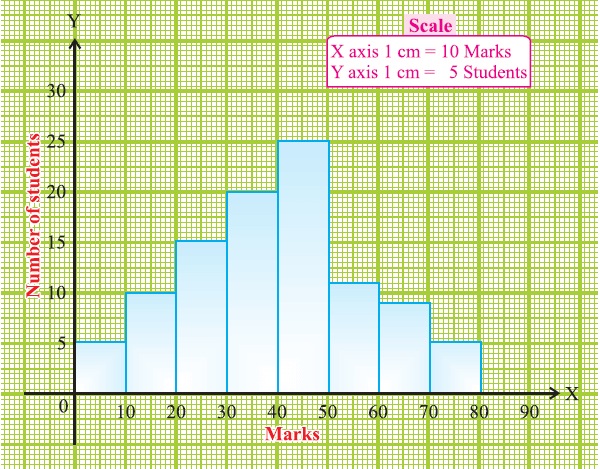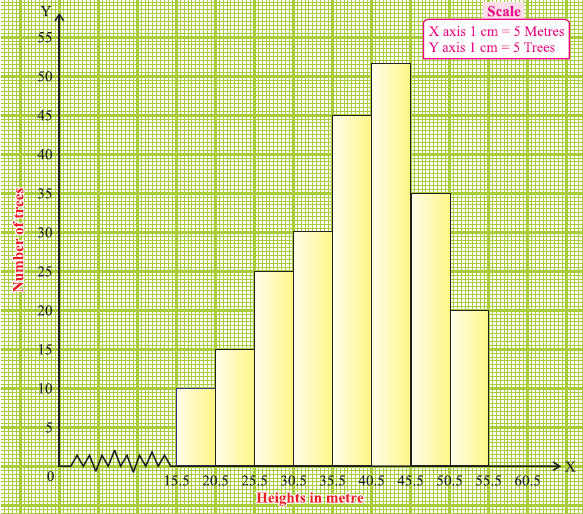CONSTRUCTION OF HISTOGRAM
Subscribe to our ▶️ YouTube channel 🔴 for the latest videos, updates, and tips.
A two dimensional graphical representation of a continuous frequency distribution is called a histogram.
In histogram, the bars are placed continuously side by side with no gap between adjacent bars.
That is, in histogram rectangles are erected on the class intervals of the distribution. The areas of rectangle are proportional to the frequencies.
We can follow the steps given below to understand how to construct a histogram.
Step 1 :
Represent the data in the continuous (exclusive) form if it is in the discontinuous (inclusive) form.
Step 2 :
Mark the class intervals along the X-axis on a uniform scale.
Step 3 :
Mark the frequencies along the Y-axis on a uniform scale.
Step 4 :
Construct rectangles with class intervals as bases and corresponding frequencies as heights.
Examples
Example 1 :
Draw a histogram for the following table which represent the marks obtained by 100 students in an examination:

Solution :
The class intervals are all equal with length of 10 marks.
Let us denote these class intervals along the X-axis.
Denote the number of students along the Y-axis, with appropriate scale.
The histogram is given below.

Note :
In the above diagram, the bars are drawn continuously. The rectangles are of lengths (heights) proportional to the respective frequencies. Since the class intervals are equal, the areas of the bars are proportional to the respective frequencies.
Example 2 :
The heights of trees in a forest are given as follows. Draw a histogram to represent the data.

Solution :
In this problem, the given class intervals are discontinuous (inclusive) form.
If we draw a histogram as it is, we will get gaps between the class intervals.
But in a histogram the bars should be continuously placed without any gap.
Therefore we should make the class intervals continuous. For this we need an adjustment factor.
Adjustment factor is
= 1/2 ⋅ [(lower limit of a class interval) -
(upper limit of the preceding class interval)]
In the above class interval, we subtract 0.5 from each lower limit and add 0.5 in each upper limit. Therefore we rewrite the given table into the following table.

Now the above table becomes continuous frequency distribution.
The histogram is given below

Subscribe to our ▶️ YouTube channel 🔴 for the latest videos, updates, and tips.
Kindly mail your feedback to v4formath@gmail.com
We always appreciate your feedback.
About Us | Contact Us | Privacy Policy
©All rights reserved. onlinemath4all.com

Recent Articles
-
US Common Core K-12 Curricum Algebra Solving Simple Equations
Jan 07, 26 01:53 PM
US Common Core K-12 Curricum Algebra Solving Simple Equations -
10 Hard SAT Math Questions (Part - 4)
Jan 05, 26 06:56 PM
10 Hard SAT Math Questions (Part - 4) -
10 Hard SAT Math Questions (Part - 3)
Jan 05, 26 06:34 PM
10 Hard SAT Math Questions (Part - 3)

